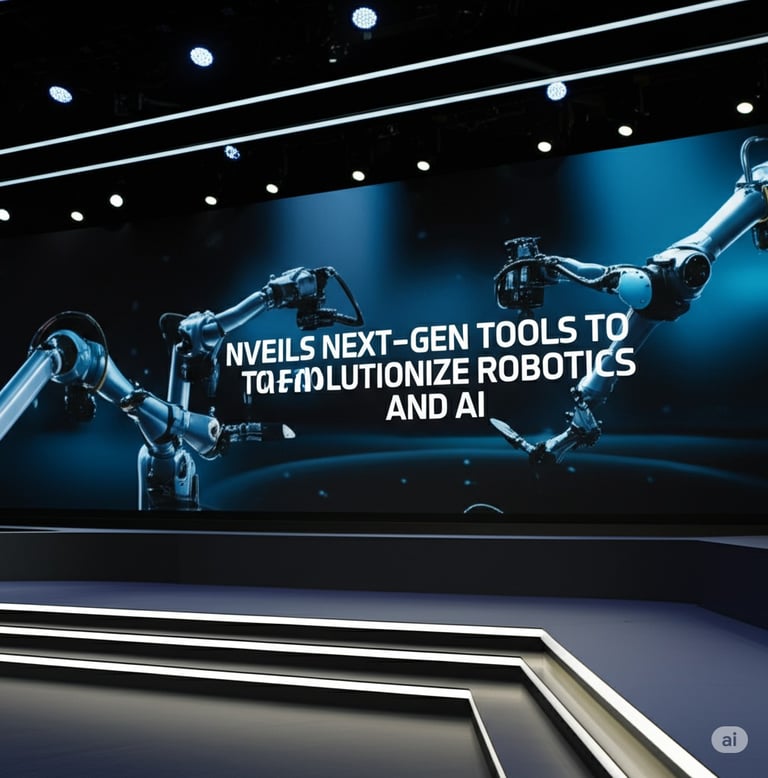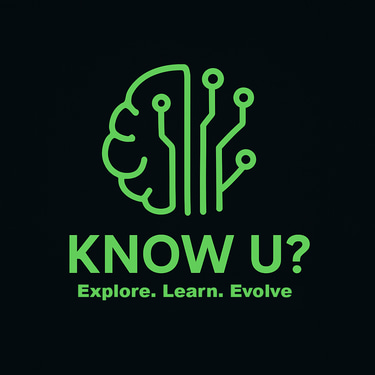NVIDIA
At SIGGRAPH, NVIDIA pulled back the curtain on a wave of groundbreaking tools designed to accelerate robotics and AI simulation. From enhanced Omniverse SDKs to cutting-edge Cosmos AI models, the company is building a future where robots can learn, adapt, and operate in the real world with greater efficiency than ever before.
8/13/20252 min read


NVIDIA Unveils Next-Gen Tools to Revolutionize Robotics and AI Simulation
At SIGGRAPH, NVIDIA pulled back the curtain on a wave of groundbreaking tools designed to accelerate robotics and AI simulation. From enhanced Omniverse SDKs to cutting-edge Cosmos AI models, the company is building a future where robots can learn, adapt, and operate in the real world with greater efficiency than ever before.
Omniverse Libraries — The Future of World Composition
NVIDIA’s new Omniverse SDKs bridge the gap between MuJoCo (MJCF) and OpenUSD, allowing over 250,000 developers in robot learning to easily simulate robots across different platforms.
The introduction of NuRec libraries brings RTX-powered Gaussian Splatting into play — a 3D rendering technique that transforms sensor data into realistic simulations. This technology is now integrated into CARLA, a popular open-source autonomous vehicle simulator used by over 150,000 developers. Industry leaders like Foretellix, Voxel51, and car giants such as Ford and Porsche are already adopting these tools to speed up data preparation and simulation accuracy.
The latest releases of Isaac Sim 5.0 and Isaac Lab 2.2 on GitHub introduce neural rendering, new robot and sensor schemas, and enhanced workflows to bridge the gap between simulated environments and real-world robotics. Companies like Boston Dynamics, Amazon Devices & Services, and Figure AI are leveraging these libraries to advance their robotics projects.
Cosmos — Generating Smarter, More Diverse Worlds
NVIDIA’s Cosmos World Foundation Models (WFMs) have already been downloaded over 2 million times, enabling developers to train robots using varied, realistic data generated from text, image, and video prompts.
The upcoming Cosmos Transfer-2 promises faster and more photorealistic synthetic data generation, even from simple 3D scenes or map inputs. The new distilled version of Cosmos Transfer reduces the traditional 70-step process to just one — a massive boost in speed for RTX PRO Server users.
Leaders like Lightwheel, Moon Surgical, and Skild AI are using Cosmos tools to simulate real-world conditions at scale for physical AI training.
Cosmos Reason — Teaching Robots to Think
While vision-language models like OpenAI’s CLIP have reshaped computer vision, they still struggle with complex reasoning. NVIDIA Cosmos Reason changes the game — this 7-billion-parameter VLM enables robots and AI agents to think like humans, applying physics, common sense, and prior knowledge to understand and act in unfamiliar situations.
Applications include:
Automated Data Curation & Annotation — preparing large-scale datasets with minimal manual effort.
Robotic Planning & Reasoning — breaking down complex commands into actionable steps.
Advanced Video Analytics — searching, summarizing, and extracting insights from massive video archives.
Major players like Uber, Magna, and VAST Data are already adopting Cosmos Reason to enhance delivery systems, traffic safety, and visual inspection in industrial environments.
Infrastructure to Power the Future
To handle these demanding workloads, NVIDIA is introducing powerful infrastructure:
RTX PRO Blackwell Servers — an all-in-one architecture for AI training, simulation, and data generation.
NVIDIA DGX Cloud on Microsoft Azure — a fully managed environment for scaling OpenUSD and RTX-based applications without the hassle of infrastructure management.
Industry giants like Accenture and Hexagon are among the early adopters.
Growing the Developer Ecosystem
NVIDIA is also launching OpenUSD Curriculum & Certification programs in partnership with big names like Adobe, Autodesk, Pixar, and Siemens, helping professionals sharpen their 3D simulation skills. Additionally, open-source collaborations are bringing more advanced robot training tools into the Isaac Lab framework, making reinforcement learning faster and more accessible.
With these innovations, NVIDIA is positioning itself as the backbone of the next era in robotics — where simulation, AI reasoning, and real-world performance merge seamlessly.
